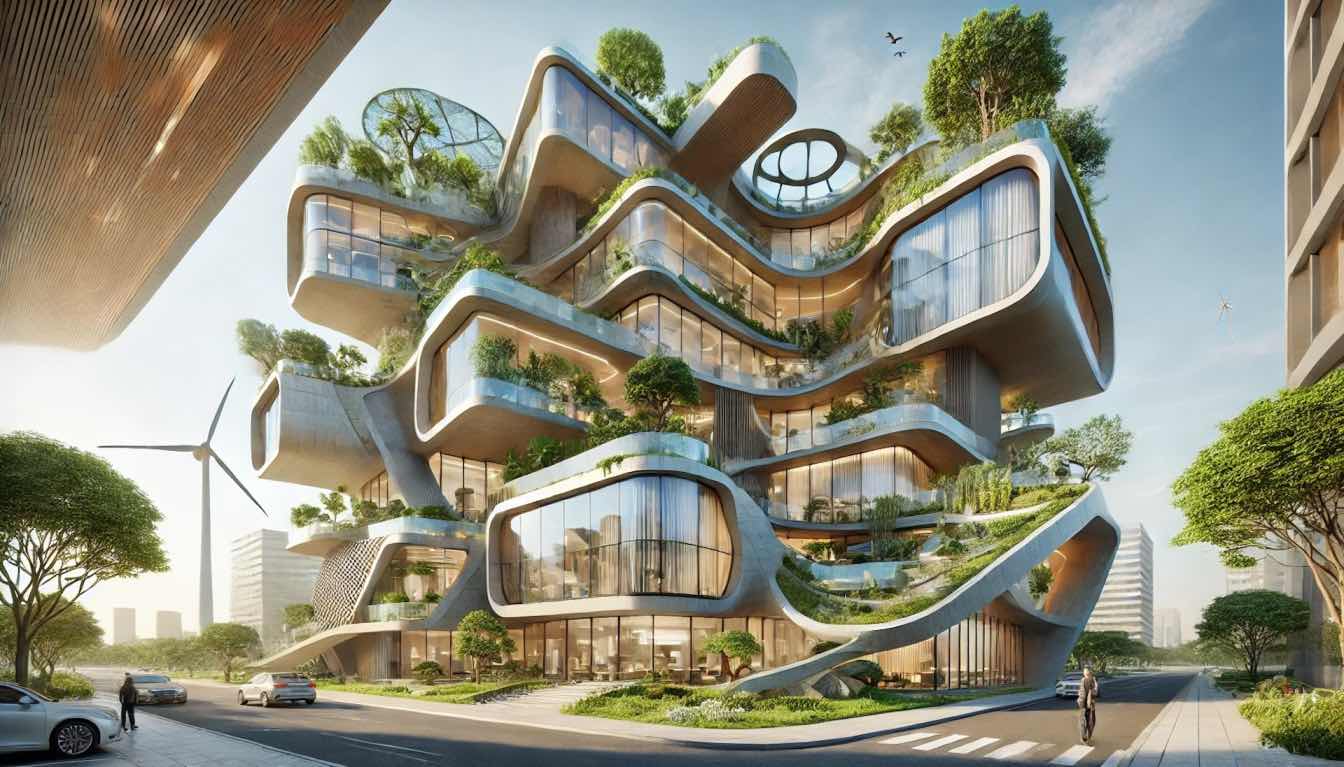Imagine stepping into a home that feels effortlessly modern, efficient, and closely connected to nature. As architecture evolves, innovative trends are transforming our residential spaces into hubs of comfort and sustainability. From smart technology to eco-friendly designs, these advancements are shaping how houses look and also enhancing how we live within them.
This glimpse into five architectural trends will show you the future of home living - where convenience meets environmental consciousness and style blends with functionality. Get ready to discover how these revolutionary concepts are redefining the places we call home.
5 Architecture Trends Revolutionizing Residential Living
1. Smart Homes Technology
Imagine walking into a home that instantly adjusts its temperature, lights, and even plays your favorite music based on your preferences. Smart home technology is making this possible, creating an environment that's both highly efficient and personalized.
These innovative systems integrate seamlessly into your daily routine, controlled by simple commands through smartphones or voice assistants like Alexa or Google Home.
In listings of apartments for rent in the UAE, for example, smart homes are increasingly common. They offer enhanced security features such as automated locks and cameras that you can monitor remotely, making life not just more convenient but also safer and more secure.
2. Sustainable Design
Eco-friendly living is no longer just a trend; it's becoming an essential aspect of modern architecture. Sustainable design focuses on reducing the environmental impact of buildings by incorporating energy-efficient materials and systems.
Homes with solar panels, rainwater harvesting systems, and smart insulation are now more common. Architects are designing spaces that maximize natural light, use recycled or low-impact materials, and ensure excellent air quality inside the home.
This commitment to sustainability not only helps reduce your carbon footprint but also can lead to long-term savings on utility costs. In essence, sustainable design creates healthier living environments for you and your family.
3. Modular Construction
Modular construction is changing the way we think about building homes. This innovative technique involves constructing individual sections, or modules, in a controlled factory setting before transporting and assembling them on-site.
Not only does this speed up the building process significantly, but it also ensures high-quality control since parts are manufactured under strict conditions.
Modular homes can offer impressive customization options, making it easier to cater to your specific needs and tastes. Plus, this method reduces waste and often proves more cost-effective than traditional construction techniques.
As urban populations grow and space becomes limited, modular construction stands out as a practical solution for efficient residential development.
4. Open Floor Plans
Open floor plans have gained immense popularity for their ability to create airy, spacious living environments. By eliminating unnecessary walls and barriers, this design trend merges kitchen, dining, and living areas into one cohesive space.
The result is a home that feels larger and fosters better social interaction among family members and guests. Natural light flows freely through the open layout, enhancing the overall ambiance of your home.
This design also allows for greater flexibility in terms of furniture arrangement and decor, making it easier to adapt to changing needs or tastes over time. Ultimately, open floor plans provide both aesthetic appeal and practical functionality in modern residential living.
5. Biophilic Design
Biophilic design aims to bridge the gap between nature and architecture, creating living spaces that promote well-being by incorporating natural elements.
Imagine a home filled with indoor plants, natural light streaming through large windows, and materials like wood and stone artfully integrated into the design. This approach not only enhances aesthetic appeal but also improves air quality and boosts your mood.
Studies have shown that homes designed with biophilic principles can reduce stress levels and increase overall happiness. By connecting indoor environments with the outside world, biophilic design fosters a sense of harmony that is increasingly sought after in today's fast-paced world.
Check Out These Trends Today
Embracing these architectural trends can transform your living experience from ordinary to extraordinary. Whether you're considering a home renovation or exploring new residences, integrating smart technology, sustainable design, and more can make all the difference.
Don't just read about these trends - take the next step toward a more modern, efficient, and harmonious home. Start by evaluating your current living space and identifying possibilities for improvement. Share this article with friends and family who might also be inspired by these ideas. Together, we can pave the way for healthier and smarter living environments.





